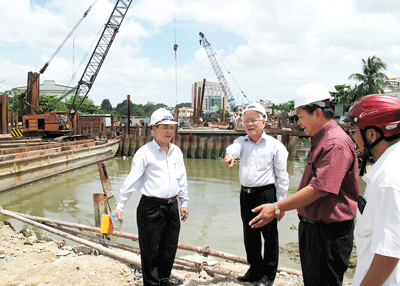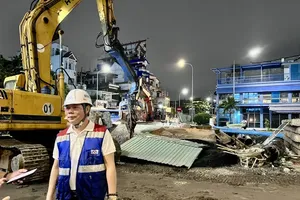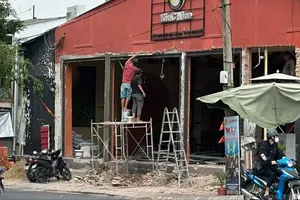Le Hoang Quan, chairman of the People’s Committee in Ho Chi Minh City led an inspection to review the first phase of the urban sanitation project along the Nhieu Loc-Thi Nghe Canal on June 20, which is at its completion stage.
The inspection team found that as the sanitation project nears completion, the surrounding environment has also improved a great deal.

According to Phan Chau Thuan, director of the project, the Nhieu Loc-Thi Nghe pumping station has capacity to draw sewage from all households in the area as well as the excess rainwater and move it through a pipe to a filtration station about 8.9-kilometers away.
The Nhieu Loc-Thi Nghe pumping station has been built at a total cost of US$18 million and has a capacity to pump 64,000 cubic meters of waste per hour.
After filtration the water flows into the Saigon River through an underground laid pipe. The pumping station will begin operating this July and will filter garbage from the neighborhood covering over 33 square kilometers with a population of 1.2 million.
The pumping stations located at 10 Nguyen Huu Canh Street in Binh Thanh District come under the urban sanitation project along Nhieu Loc-Thi Nghe Canal and will help reduce pollution and flooding in Districts 1, 3, 10, and Phu Nhuan, Binh Thanh, Tan Binh, Go Vap Districts.
However, the waste water treatment plant in District 2 that will be built in Phase 2 will be needed to fully treat all sewage.
At the moment, all pipes from the water drainage system in the districts mentioned above are connected to an opening located four meters underground at the intersection of Ut Tich Street and Le Binh Street in Tan Binh District, ready to carry waste water to the pumping stations.
After the successful operation of these new pumping stations, sewage of urban dwellers in the seven downtown districts will move through the 70-kilometer pipe system, installed along 69 streets from 2005 to June 2012, into the round 3-meter diameter pipeline along the main Nhieu Loc-Thi Nghe Canal to the pumping stations.
All openings of the existing system that pour sewage into various canal openings will be closed, and the canal will then only receive rain and river water, thus greatly reducing pollution levels.
According to CDM International Inc., the consulting, designing, and monitoring company of the project, the pumping station is supposed to filter all garbage through a 2.5 cm diameter pipeline before moving it to the waste water treatment plant. Since the plant has not yet been built, the sewage cannot be entirely processed. The temporary solution is to mix sewage with river water and then pour it into the Saigon River.
Chairman Le Hoang Quan asked the management of the project to urgently complete other tasks of Phase 1 such as dredging of canals, building of bridges over Hoang Sa and Truong Sa Streets as well as carefully prepare for Phase 2 to solve the water pollution of the city as soon as possible.
Phase 2 of the urban sanitation project along Nhieu Loc-Thi Nghe Canal will start in 2015 to complete by 2019, at a cost of US$470 million, $450 million of which will be a loan from the International Bank.
In the second phase of the project, tasks to collect and process waste water in the basin of Nhieu Loc-Thi Nghe Canal as well as District 2 will be taken care of. A 3.2-meter diameter round, 8 kilometer long pipeline will be built from the East Well in District 2 to the waste water treatment plant in Thanh My Loi Ward of District 2.
Meanwhile, a plant with a capacity of 480,000 cubic meters per day will also be built to process mud and reduce the stink from the sewage.
























